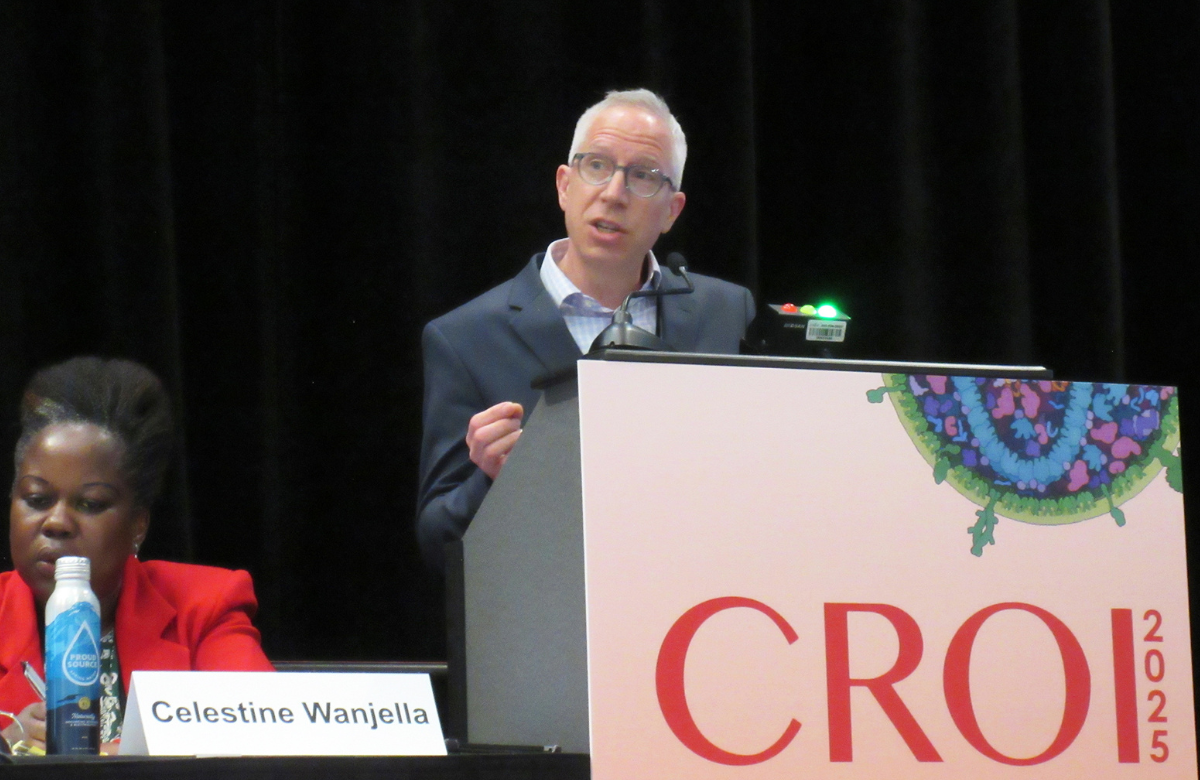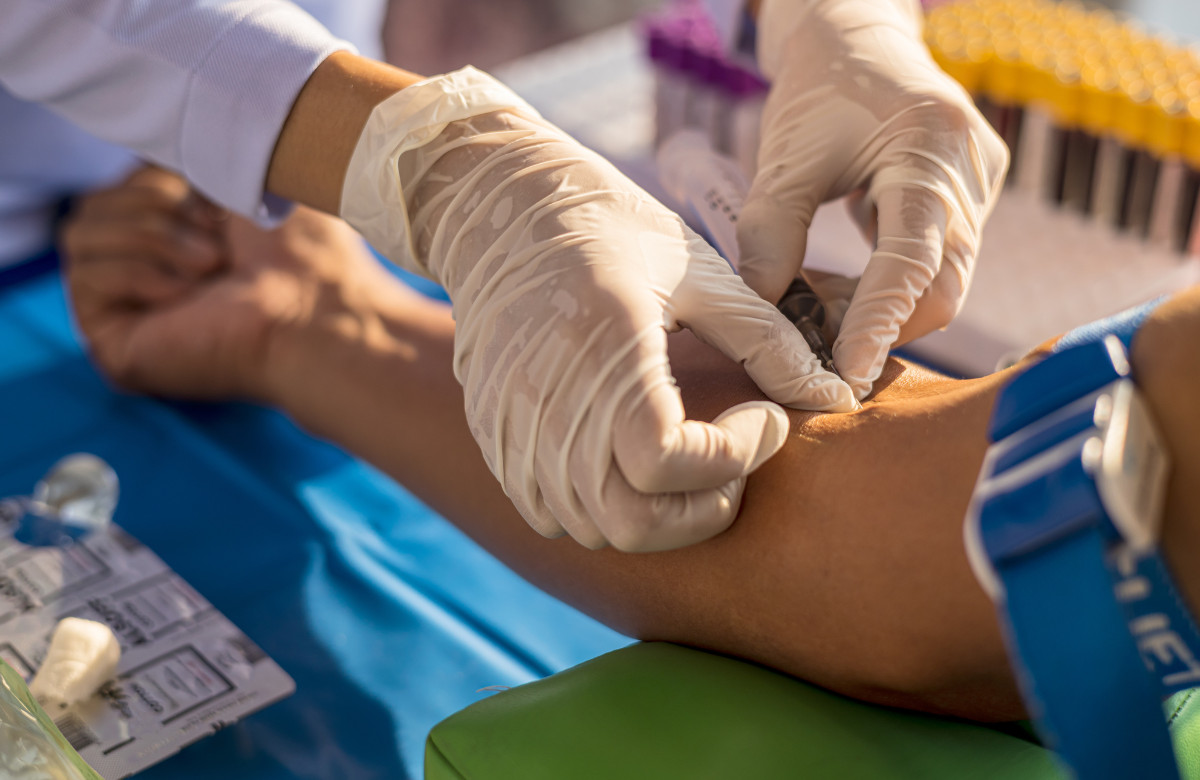Coronary artery disease uncommon in people with HIV in Uganda

A study from Uganda has found that people with HIV do not have a higher prevalence of coronary artery disease compared to HIV-negative individuals, with both groups showing much lower rates than in Europe and North America. The research, presented by Dr Mark Siedner of Harvard University at last week’s Conference on Retroviruses and Opportunistic Infections (CROI 2025) in San Francisco, suggests that statins may not be a priority intervention for heart disease prevention in African populations with HIV.
The Uganda Coronary Artery Disease Study compared 287 adults with HIV (on antiretroviral treatment for at least three years) to 299 age- and sex-matched HIV-negative controls. All participants, with a mean age of 57 years, underwent CT scans to measure calcium and plaque in the coronary arteries.
Results showed that 9.1% of people with HIV and 6.4% of people without HIV had coronary artery disease, a non-significant difference. Both groups had low 10-year cardiovascular risk scores (3.4% and 4.1%, respectively). These prevalence rates are dramatically lower than those seen in recent general population studies from the United States (50%), Sweden (40%), and South Korea (20%).
"The amount of activity reported by this group is about ten times more than what the average American reports," noted Dr Siedner. "They work hard each day to provide subsistence for their families, and I can't help but think that their lifestyle, as subsistence farmers, does contribute to increased health in terms of coronary artery disease."
The findings highlight the need for region-specific cardiovascular risk assessment models for people living with HIV in sub-Saharan Africa.
Statins may protect heart health through multiple mechanisms

Statin treatment may reduce cardiovascular risk in people with HIV not only by lowering cholesterol but also by reducing coronary plaque and inflammation, according to research presented by Professor Steven Grinspoon at CROI 2025. This substudy of the REPRIEVE trial examined how underlying coronary artery disease and inflammation affect the incidence of major cardiovascular events and the response to statin treatment.
The study analysed data from 804 participants from the United States, investigating baseline levels of non-calcified coronary plaque and inflammation.
Non-calcified plaque accumulates in the arteries long before any symptoms of heart disease develop. It consists of cholesterol, white blood cells and tiny fibres, and is considered unstable because it can rupture, leading to blood clots and heart attacks. Statin treatment can stabilise and eventually shrink this type of plaque by removing the cholesterol.
Non-calcified plaque was found in 40% of participants at baseline, and those with such plaque were 2.5 times more likely to experience a major cardiovascular event during the five-year study period. Moreover, pitavastatin appeared to provide greater benefit for those with pre-existing coronary plaque compared to those without, though this trend was not statistically significant. Similarly, participants with higher levels of heart muscle damage markers (hs-cTnT) showed a stronger response to statin treatment.
The researchers also found that elevated levels of inflammatory markers at study entry were associated with major cardiovascular events. This suggests that pitavastatin's effectiveness may work through multiple pathways including a reduction in inflammation.
Professor Grinspoon concluded that further research is needed to determine if the inflammatory and heart damage biomarkers identified in the study could identify which people with HIV might benefit most from preventive statin treatment, even those currently classified as having lower cardiovascular disease risk.
HIV testing requirements must be simplified for injectable PrEP to have a future

The high cost of HIV testing – not just the cost of the drugs – is creating a significant barrier to expanding injectable PrEP access globally, according to discussions at CROI 2025. Dr Cheryl Case Johnson of the World Health Organization highlighted how testing requirements for PrEP have paradoxically become more demanding than those for HIV treatment, particularly for injectable cabotegravir.
Some guidelines recommend HIV RNA tests that detect infection earlier than standard antibody tests. However, RNA tests are prohibitively expensive in low-resource settings, costing US$33-$85 per test plus high equipment and staffing costs, compared to $0.50-$3.00 for rapid antibody tests.
The World Health Organization has reviewed evidence on the population impact of different HIV testing strategies. While not using RNA tests would mean that some acute HIV infections would be missed in people starting PrEP, overall numbers of missed infections and of new cases of drug resistance would be low.
Dr Johnson said that data from studies of injectable PrEP suggest that 0.18% of PrEP users might have HIV that would be missed because of not using RNA testing. This implies that to detect one additional HIV case using RNA testing, that was missed by a standard rapid test, 5305 people would need to be tested, at an estimated cost of at least $47,000.
WHO will reaffirm the use of standard rapid tests for PrEP initiation and explore the use of self-testing.
This might be essential to making PrEP feasible and affordable, which has become even more of a priority following the Trump administration’s drastic cuts to funding, especially of PrEP.
Low doxyPEP uptake among people with HIV, despite proven effectiveness

Studies presented at the conference reveal that despite its effectiveness, relatively few people living with HIV in the United States are accessing doxyPEP – the use of the antibiotic doxycycline to prevent bacterial sexually transmitted infections (STIs).
Dr Mike Barry of the San Francisco AIDS Foundation presented data on doxyPEP uptake among attendees at the city’s Magnet clinic between 2022 and 2024. The clinic, which serves about 6000 people annually and accounts for approximately 16% of syphilis and gonorrhoea diagnoses in San Francisco, identified 7436 individuals who met the criteria for doxyPEP according to local guidelines.
Of those eligible, 59% received doxyPEP prescriptions. However, only 36% of eligible individuals reported taking at least one dose, and just 22% used it consistently against potential STI exposures. People living with HIV were particularly less likely to use doxyPEP consistently – only 14% did so. This was one of the lowest rates among demographic groups, with only people experiencing homelessness showing lower consistent use (13%).
In a separate study, Dr Hyman Scott of San Francisco's Department of Public Health demonstrated doxyPEP's effectiveness – including against gonorrhoea – among HIV PrEP users. The research compared STI diagnoses in the five quarters before and after individuals started doxyPEP, finding a 66% reduction in overall STI incidence. Specifically, syphilis cases decreased by 89%, chlamydia by 81%, and gonorrhoea by 44%.
Notably, the data showed a statistically significant reduction in gonorrhoea infections, unlike previous findings. Dr Scott suggested timing might be crucial for gonorrhoea prevention: "We think in the case of gonorrhoea it might be crucial to treat early. High concentrations of doxycycline may be able to forestall infection by Neisseria gonorrhoeae in the first 24 hours after exposure." His team encourages doxyPEP users to take their dose as soon as possible after sex.
Simplified PrEP monitoring proves just as effective as standard care

A Dutch study has found that less frequent monitoring and online delivery of PrEP services work just as well as the traditional approach of quarterly in-person clinic visits. The research, presented by Marije Groot Bruinderink of the Public Health Service of Amsterdam at CROI 2025, provides evidence supporting a shift to less intensive monitoring for HIV prevention.
The EZI-PrEP study compared four different service models among 469 PrEP users: in-person monitoring every three or six months, and online monitoring at the same intervals. The online service included users providing information via an app, testing at high-street laboratories and hospitals, optional video consultations, and medication delivery by post.
Results showed no significant difference in PrEP protection during sex across all groups, with similar rates of sexual encounters that were not protected by either PrEP or condoms. While STIs were detected at a slightly higher rate in six-monthly visits (29.1%) versus three-monthly visits (25.6%), the difference wasn't statistically significant. Though users with six-monthly monitoring had more additional STI-related visits, they had fewer visits overall.
The researchers say that simplified services reduce the burden for users as well as costs for health services.
Sign up for aidsmap bulletins
Has this email been forwarded to you? Make sure you don’t miss out on future emails from aidsmap, and sign up at: www.aidsmap.com/subscribe
